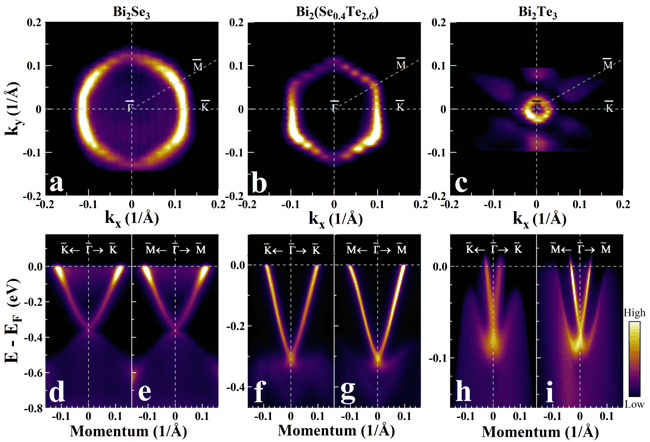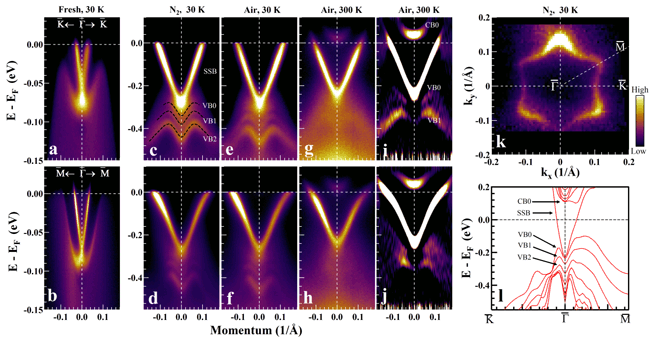Robustness of Topological Order and Formation of Quantum Well States in Topological Insulators Exposed to Ambient Environment
The topological insulators represent a novel state of matter where the bulk is insulating but the surface is metallic which is expected to be robust due to topological protection. The topological surface state exhibits unique electronic structure and spin texture that provide a venue not only to explore novel quantum phenomena in fundamental physics, but also to show potential applications in spintronics and quantum computing. The physical property investigation (like transport measurements) and ultimate application of the topological insulators usually involve surfaces that are exposed to ambient environment (1 atmosphere and room temperature). One critical issue is how the topological surface state will behave under such ambient conditions.
Using self-developed high resolution angle-resolved photoemission spectroscopy (ARPES) system, Xingjiang ZHOU’s group in the Institute of Physics, Chinese Academy of Sciences, in collaboration with other groups, has reported high resolution ARPES measurements to directly probe the surface state of the prototypical topological insulators, Bi
2Se
3 and Bi
2Te
3, upon exposing to various environments. They find that the topological order is robust even when the surface is exposed to air at room temperature. However, the surface state is strongly modified after such an exposure. Particularly, they have observed the formation of two-dimensional quantum well states near the exposed surface of the topological insulators. These findings provide key information in understanding the surface properties of the topological insulators under ambient environment and in engineering the topological surface state for applications.
The related work is published in Chaoyu Chen et al., Proceedings of National Academy of Sciences of USA 109 (2011) 3694. This work was supported by grants from the Ministry of Sciences and Technology of China, and the National Natural Science Foundation of China.
Full article can be found at:http://www.pnas.org/content/109/10/3694.full.pdf+html
 |
| Figure 1:Fermi surface and band structure of Bi2Se3, Bi2(Se0.4Te2.6) and Bi2Te3topological insulators cleaved in situ and measured at 30 K in ultra-high vacuum. (Image by Xingjiang ZHOU et al.) |
 |
| Figure 2:Persistence of topological surface state and formation of quantum well states in Bi2Te3after exposure to N2or air.(Image by Xingjiang ZHOU et al.) |



